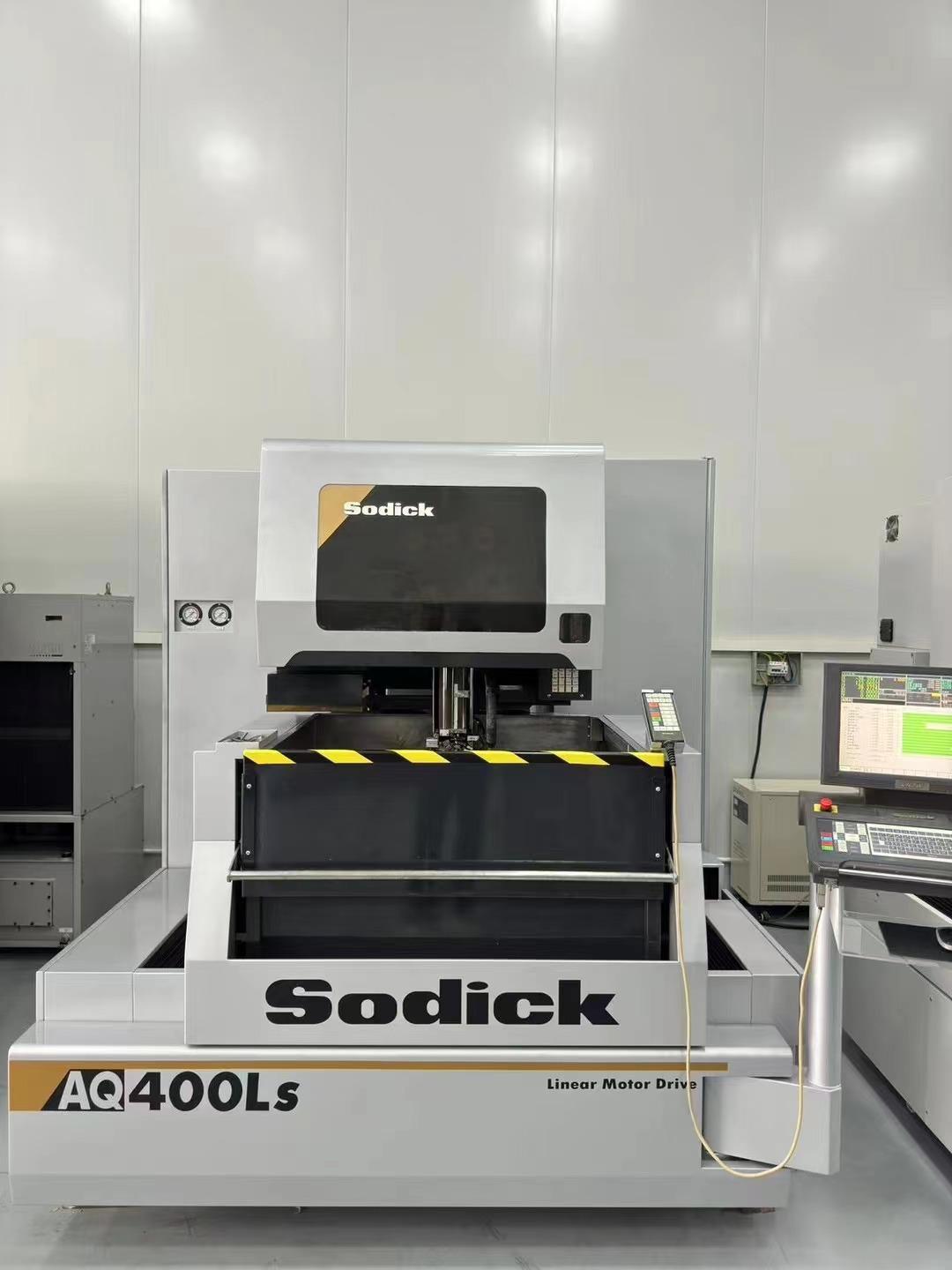What factors affect the machining accuracy of Sodick EDM?
1. Mechanical structure of the machine factors
Guideway accuracy: Sodick EDM machine tool guideway is the electrode wire and workpiece relative movement of the benchmark. If the guideway has wear and tear, straightness and flatness errors, it will directly affect the motion accuracy of the electrode wire. For example, for every 0.01mm increase in the straightness error of the X and Y axis guideways, the machining accuracy may decrease by about 0.02 - 0.03mm. High-precision Sodick machines usually use high-precision linear guideways, and their accuracy is ensured by regular maintenance and calibration.
Screw rod accuracy: The accuracy of the screw rod is critical to the positioning accuracy of the electrode wire. Pitch error and cumulative error of the silk rod can lead to inaccurate positioning of the electrode wire during movement. For example, a pitch error of 0.005mm in the screw rod will cause the positioning error of the electrode wire to increase significantly after a long stroke movement, thus affecting the machining dimensional accuracy.
Worktable precision: the flatness and parallelism of the worktable will affect the clamping accuracy of the workpiece. If the table flatness is poor, the workpiece will be tilted after clamping, which will lead to deviation of the perpendicularity between the machining surface and the electrode wire during machining, so that the shape accuracy of the machined parts will be poor, such as tilting in plane machining, and cylindrical machining with over-degree of cylindricity.
2. Electrode wire factor
Electrode wire diameter: the precision and consistency of the diameter of the electrode wire will affect the size of the discharge gap, which in turn affects the machining accuracy. Different diameters of the electrode wire, the discharge gap is different. For example, the discharge gap of 0.1mm electrode wire is generally around 0.02 - 0.03mm, and the discharge gap of 0.2mm electrode wire may be 0.03 - 0.04mm. If the diameter of electrode wire is not uniform, it will lead to unstable discharge gap, and the machining accuracy will be reduced.
Electrode wire tension: Uneven or unstable electrode wire tension will cause the electrode wire to shake during the discharge process. Appropriate tension can ensure the straightness of the electrode wire and improve the machining accuracy. If the tension is too small, the electrode wire jitter increases, which will make the discharge position unstable, and the machining accuracy may be reduced by 0.01 - 0.02mm; while the tension is too large, which may lead to electrode wire breakage or excessive wear of machine parts.
Electrode wire material and quality: The material of the electrode wire (e.g. brass, galvanised copper, etc.) affects its electrical conductivity and corrosion resistance. Good quality electrode wire can provide more stable discharge performance, which is conducive to improving machining accuracy. Poor quality electrode wire may have uneven local discharge, resulting in increased roughness of the machined surface and decreased dimensional accuracy.
3. Discharge parameter factors
Discharge energy: the size of the discharge energy is directly related to the degree of discharge corrosion. If the discharge energy is too large, it will cause the discharge pit to be too large and too deep, so that the machining accuracy is reduced and the surface roughness becomes worse. For example, when processing precision parts, too high a discharge energy may cause the dimensional accuracy to drop by 0.02 - 0.03mm, and the surface roughness Ra value to rise from 0.4μm to more than 0.8μm. Too little discharge energy, on the other hand, will slow down the machining speed.
Discharge pulse width and interval: Pulse width determines the duration of each discharge, and pulse interval affects the frequency of discharge. A suitable pulse width and interval can ensure the stability of the discharge process. If the pulse width is too long or the interval is too short, it is easy to produce arc discharge, burn the workpiece and electrode wire, so that the machining accuracy and surface quality decline.
4. Working fluid factor
Cleanliness of the working fluid: the working fluid will affect the stability of the discharge if it contains more metal shavings and impurities. Dirty working fluid will make the insulation of the discharge gap decrease, easy to produce short-circuit discharge, resulting in reduced machining accuracy. For example, too high a concentration of metal chips in the working fluid may reduce the machining dimensional accuracy by about 0.01 - 0.02mm.
Performance of the working fluid: the conductivity, viscosity and other properties of the working fluid will also have an impact on the machining accuracy. Conductivity is not suitable working fluid will affect the transfer of discharge energy, viscosity is not suitable will affect the working fluid chip removal and cooling effect. For example, if the viscosity of the working fluid is too high, the chip removal is not smooth, which will make the metal chips in the discharge gap accumulate and affect the machining accuracy.
5. Control system factors
Precision of the CNC system: The CNC system of Sodick EDM controls the movement trajectory of the electrode wire and the discharge parameters. A high-precision CNC system can achieve precise interpolation operations to ensure that the electrode wire moves according to the preset trajectory. If the interpolation precision of the CNC system is low, it will lead to the deviation of the movement trajectory of the electrode wire and reduce the machining precision. For example, in the processing of complex shaped parts, the interpolation error of the CNC system increases by 0.001mm, the machining shape accuracy will be significantly affected.
Feedback and compensation mechanism: a good control system has a feedback and compensation function, which can monitor the position of the electrode wire, discharge state, etc. in real time and compensate accordingly. If the feedback and compensation mechanism is not sensitive or inaccurate, for example, when the temperature changes lead to thermal deformation of the machine tool, the position of the electrode wire can not be compensated in time, which will affect the machining accuracy.



